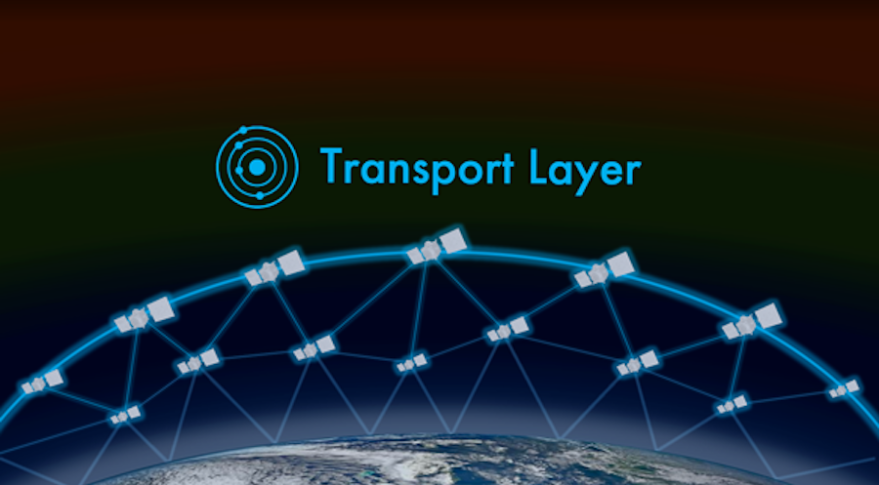After one of the bidders lodged a protest the same day proposals were due for the Space Development Agency’s Tranche 1 Transport Layer of small satellites earlier this month, the agency is planning to rescind that request—and to issue a new one under a different acquisition authority.
The new request for proposals should not impact the “delivery timeline, cost, or technical requirements” for the Tranche 1 Transport Layer, which is intended to be the first large batch of satellites that will help make up the National Defense Space Architecture used for missile warning, communications, data coverage and sharing, and other capabilities, SDA spokesperson Jennifer Elzea said.
The original request for proposals called for up to 126 satellites in Tranche 1, significantly up from the 28 satellites that will make up Tranche 0. Tranche 1 would be divided between six orbital planes and split between multiple vendors. Each bidder was instructed to develop two of the orbital planes, along with 42 satellites.
Maxar Technologies, a contractor more known for providing satellite imagery than developing hardware for the Defense Department, lodged its protest of the SDA’s request for proposals Oct. 8. At the time, a company spokesperson told Air Force Magazine that “Maxar wants to ensure that the government is following its own rules in connection with the procurement and is confident that the SDA is committed to complying with the [federal acquisition regulations].”
In a statement issued Oct. 22, Elzea said SDA had “heard from industry through a protest that pointed out the solicitation may have inadvertently limited competition. SDA is committed to full and open competition and the agency understands protests are a potential and not uncommon part of the process, but SDA would like to avoid even the perception that competition was limited in some way.”
The Government Accountability Office dismissed Maxar’s protest in light of SDA’s decision to cancel the old solicitation, an SDA official confirmed. The new solicitation was posted Oct. 28, with the same requirements of up to 126 satellites split between six orbital planes.
The new solicitation is under an Other Transaction Authoritiy, an alternate pathway from standard acquisition practices that allows for more flexible, rapid agreements that are generally not subject to federal acquisition regulations.
“While this is a shift from our earlier acquisition approach, OTAs generally allow for a more streamlined solicitation, evaluation, and contract award process that is well-suited for SDA,” Elzea said in a statement.
A December 2020 report from the Center for Strategic and International Studies found that the DOD’s use of OTAs has expanded dramatically in recent years, with OTA obligations growing more than 700 percent in the span of five years.
As part of the OTA process, the new Tranche 1 solicitation notes, SDA will be able to make an award only if a “nontraditional” defense contractor or nonprofit research institution significantly participates in the prototyping process, all significant participants in the award are small businesses or nontraditional defense contractors, or “at least one-third of the total cost of the prototype project” is paid for by funds not provided by the federal government.
Elsewhere in the proposal, SDA sets out a deadline of Sept. 30, 2024, for launching the first satellites in Tranche 1, with new proposals due by Nov. 24. Tranche 0 is expected to launch by March 31, 2023. Space Development Agency Director Derek M. Tournear has said he hopes to roll out new capabilities every two years as the agency builds out the constellation of low-Earth orbit satellites.

